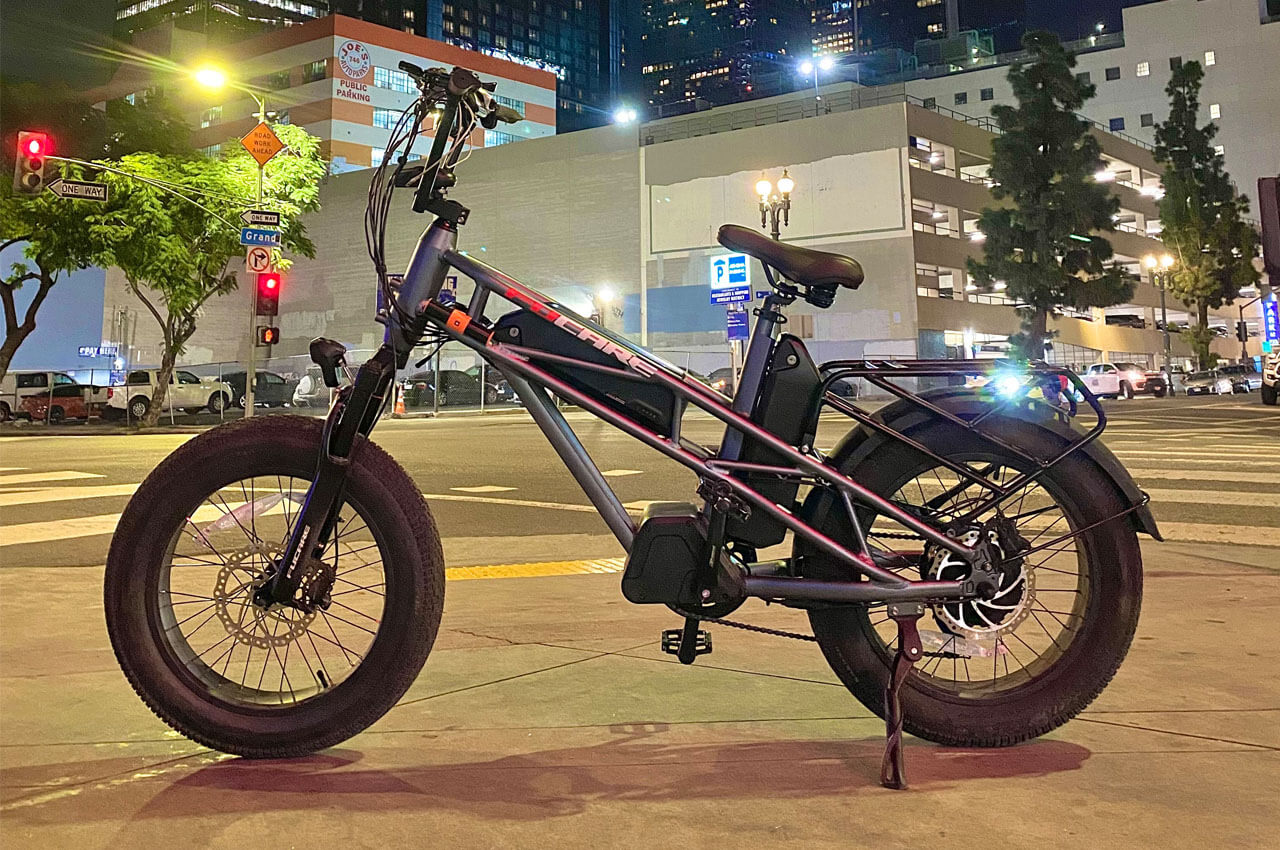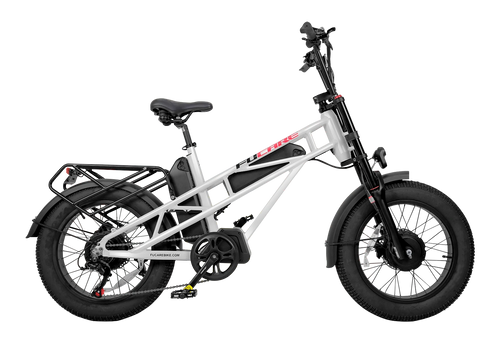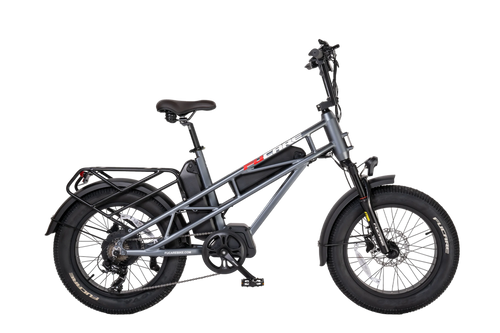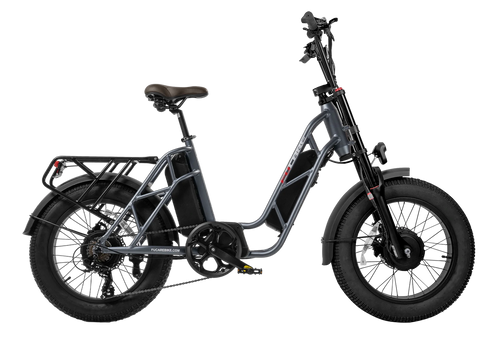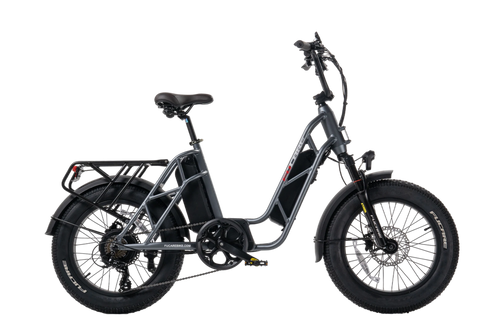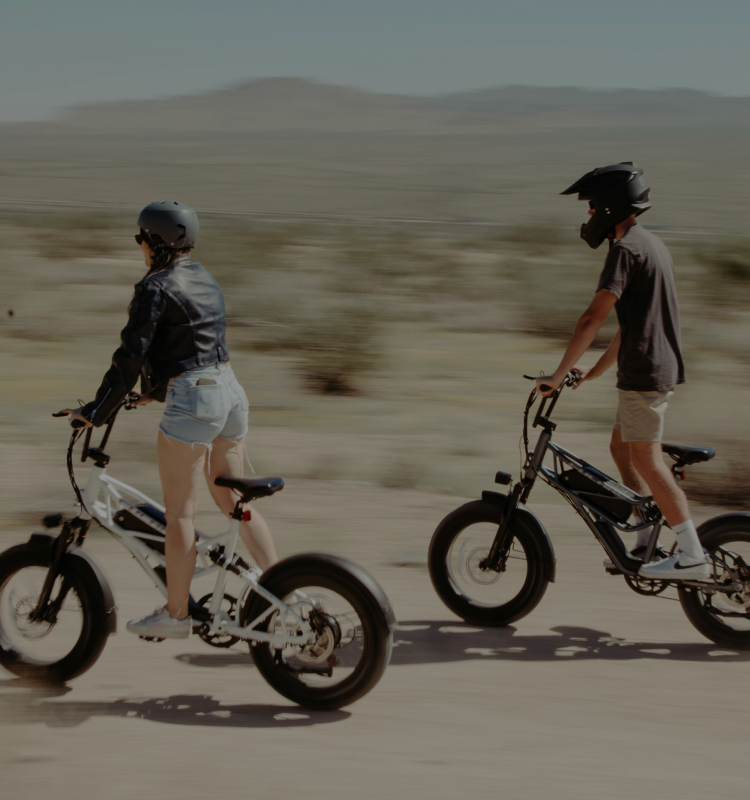Can You Ride An Electric Bike In The Rain
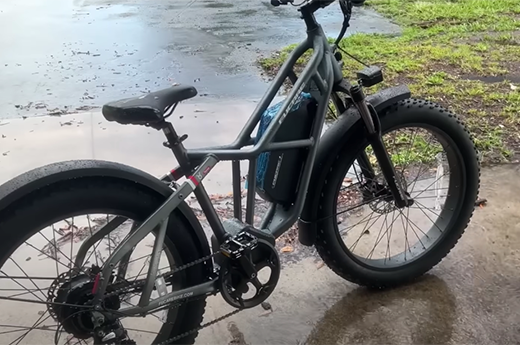
Whether it's commuting to the office, accompanying your children to school, or accomplishing weekend errands, your e-bike stands as a trusty steed. However, the sudden appearance of rain clouds can cast a shadow of doubt on your plans.
Don't worry! You don't have to cancel your plans if you're prepared. This guide will give you straightforward tips to safely ride your electric bike, even on rainy days.
Tips for Riding in the Rain
- Strategizing a Safe Passage
- Exercising Increased Caution
- Adapting Your Wardrobe to the Weather
- Ride With Lights Permanently
- Equip your Ebike with Fenders
- Preparing Your Tires for Enhanced Traction
- Avoid Deep Waters
- Avoid Heavy Rain
- Don't Compromise Safety
Can You Ride an Electric Bike in the Rain?

The simple answer to this question is YES. Riding your ebike in the rain is generally fine. The motors and batteries are sealed units, typically offering some level of water resistance. However, it's advisable to check the e-bike's IP rating to understand its specific water resistance capabilities.
Are E-bikes Waterproof?
E-bikes, like many electronic devices, typically are not fully waterproof but may be designed to be water-resistant to some degree.
Imagine you have a jacket labeled as "water-resistant." This jacket can handle light rain or mist, keeping you relatively dry during brief exposure to such conditions. The fabric is treated to repel water, but under persistent or heavy rainfall, the water may eventually penetrate the jacket's material.
On the other hand, consider a "waterproof" raincoat designed for harsh weather conditions. This garment is constructed with sealed seams and materials that completely block water entry, no matter how long you're exposed to pouring rain.

Water-resistance is a crucial attribute found in most e-bikes. All Fucare eBikes are certified IPX4. So they are “protected against splashing water.” This is more than enough to protect your electric bike should you get caught out in the rain. To safeguard against rain, the motor, battery, and electronic parts of an e-bike are encapsulated to block water entry.
This means riding in the rain is generally safe and won't affect the e-bike's functionality, longevity, or pose any risk of electrical harm to the user. Yet, it's important to note that these components are not designed to withstand being fully submerged. Riding through deep water, like floods or streams, can lead to water breaching the protective seals and damaging the motor by causing it to fail or corrode.

1.Strategizing a Safe Passage
Preparation is key when embarking on a ride in rainy conditions. Planning your route with an emphasis on safety can make a significant difference. Opt for well-paved roads over those littered with potential hazards like loose gravel or significant cracks that can become treacherous when wet.
Such careful planning not only ensures your safety but also protects your e-bike from the unseen dangers that rain can obscure.
2.Exercising Increased Caution
The advent of rain transforms the landscape of urban and rural roads alike, necessitating a more cautious approach to e-biking.
Decreasing your speed is not just a safety measure; it's a strategic decision that enhances your ability to navigate through the unpredictability of wet surfaces.
Braking in wet conditions demands foresight—initiate braking sooner than usual and apply gradual pressure to avoid sudden stops that could lead to skidding.
Furthermore, maintaining an upright position and avoiding sharp turns ensures maximum tire contact with the road, thereby minimizing the risk of slipping on wet surfaces.
Read More: 8 Tips For Riding An E-Bike At Night

3.Adapting Your Wardrobe to the Weather
The rapid onset of rain can catch even the most seasoned e-bikers off guard, making appropriate attire a necessity. Investing in water-resistant clothing, such as a quality rain jacket, and protective eyewear can greatly enhance your comfort and safety.
Materials that repel water and maintain warmth are preferable, ensuring that you remain dry and focused. Don't overlook the importance of gloves, which provide both warmth and a secure grip on wet handlebars.
4.Ride With Lights Permanently
When rain falls and visibility dips, don't let your e-bike become invisible. Equipping both a headlight and taillight becomes even more crucial in these conditions.
Enhancing how easily others can see and steer clear of you boosts both your visibility and safety. Additionally, a headlight aids in your ability to discern oncoming vehicles, pedestrians, and traffic signs more effectively.
5.Equip your Ebike with Fenders
Fenders are an invaluable addition to any e-bike, particularly for those who ride in varied weather conditions. They serve as a barrier against road spray and debris, keeping both the rider and the e-bike clean and dry.
The installation of fenders not only contributes to your comfort but also to the overall maintenance of your e-bike by minimizing exposure to potentially harmful elements.
6.Preparing Your Tires for Enhanced Traction
On dry surfaces, standard tire pressure works perfectly, but when the rain starts, a small adjustment can have a significant impact. Reducing the tire pressure by about 10 PSI to roughly 90 PSI increases the tire's contact area with the wet road. This enhanced grip not only improves the stability of your e-bike but also significantly lowers the likelihood of skidding on slippery surfaces, making your ride safer in wet conditions.

7.Avoid Deep Waters
Embarking on a journey through waterlogged paths poses significant risks to your e-bike, particularly to its motor and battery. It's advised to circumvent deep puddles or flooded areas that have the potential to submerge crucial components of your e-bike.
In situations where avoiding such obstacles is impossible, it's wise to deactivate your e-bike's electrical systems and proceed by manual power. This precautionary measure significantly reduces the likelihood of water infiltration into sensitive areas.
Upon successfully navigating through these challenges, it's imperative to ensure that all components are thoroughly dry before reactivating the electrical systems, thus preventing potential electrical shorts.
8.Avoid Heavy Rain
Your e-bike is capable of handling light to moderate rain, but it's wise to avoid riding in heavy downpours or during thunderstorms. If you find yourself caught in sudden severe weather, including heavy rain, lightning, or strong winds, it's crucial to seek immediate shelter. Look for a safe place, ideally away from any risks such as floodwaters, falling branches, or flying debris. Choosing a secure location to wait out the storm is essential for your safety.
9.Don't Compromise Safety
The joy of riding your e-bike comes from the freedom and experiences it offers, with safety as the fundamental priority. Rainy weather, especially if it makes you feel uncertain or uneasy, calls for a cautious approach.
If the conditions seem intimidating, it's always wiser to opt for safety and wait for the weather to improve. Remember, e-biking is not about braving adverse weather but enjoying the ride. Sunny days will return, offering ample opportunities for safe and enjoyable e-biking adventures.
Maintaining Your E-Bike After Rain Exposure

Post-Ride Cleaning
After riding in the rain, it is essential to clean your e-bike to remove any dirt, grime, or corrosive substances like road salt. Use a soft cloth and mild detergent to gently wipe down the frame, components, and electronic parts. Avoid direct water jets or high-pressure hoses as they can force water into sensitive areas, leading to potential damage.
Chain and Component Lubrication
Moisture can strip lubrication from the chain and other moving parts, increasing the risk of rust and wear. After cleaning and drying your e-bike, apply a suitable water-resistant lubricant to the chain, gears, and any other moving components to ensure smooth operation and prolong their lifespan.
Battery Care
The battery is the heart of your e-bike, and special care should be taken to maintain its performance, especially after exposure to rain. Ensure the battery compartment is dry before charging, and store the battery in a cool, dry place. Regularly check the battery and its connections for any signs of corrosion or damage.
You may want to know How To Care For Ebike Battery
Conclusion
Riding an e-bike in the rain is not only possible but can be a safe and enjoyable experience with the right preparations and precautions. Understanding your e-bike's water resistance, adopting safe riding practices, and performing regular maintenance are key to navigating rainy conditions confidently. By embracing these practices, e-bike riders can enjoy the freedom and convenience of e-biking, come rain or shine, ensuring a sustainable and efficient journey every time.
Continue reading
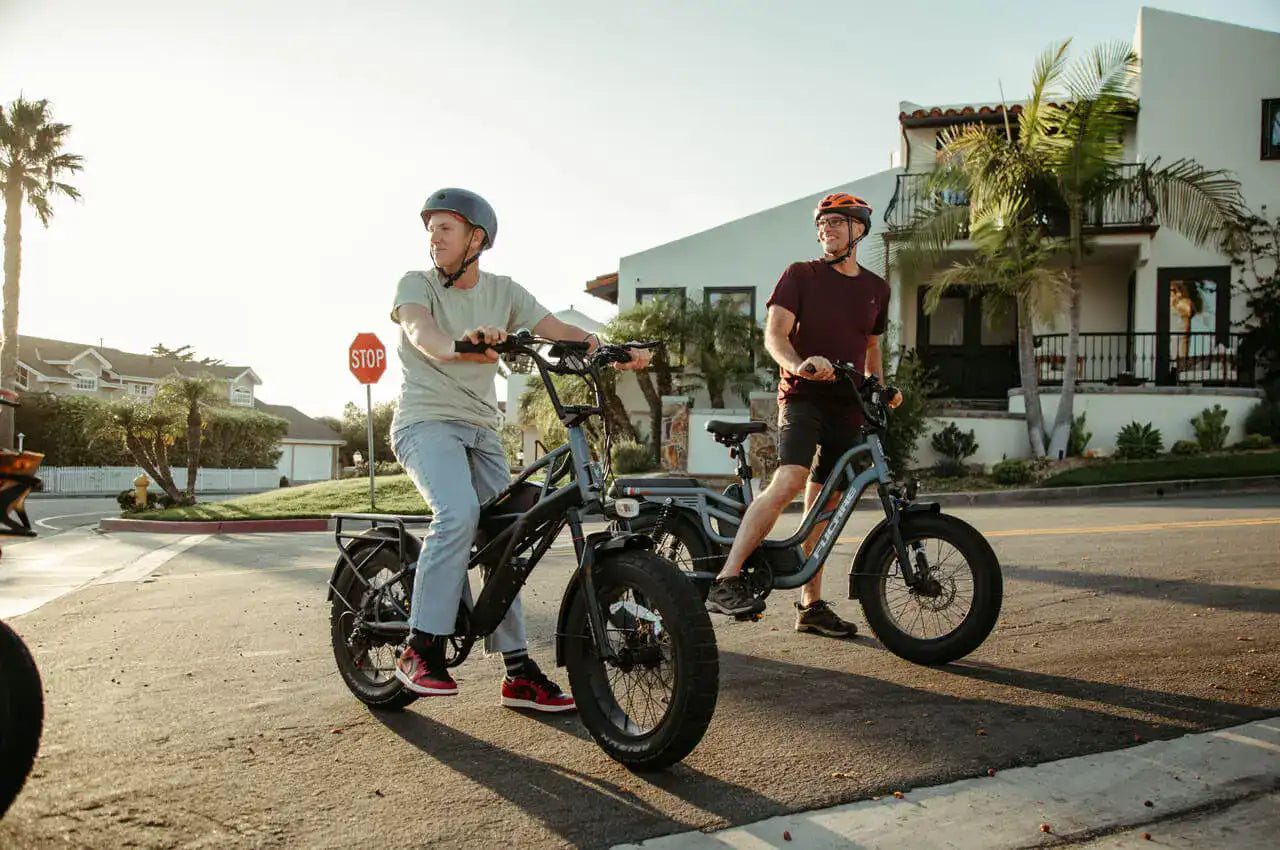
Can Riding an E-Bike Boost Your Mental Health?
